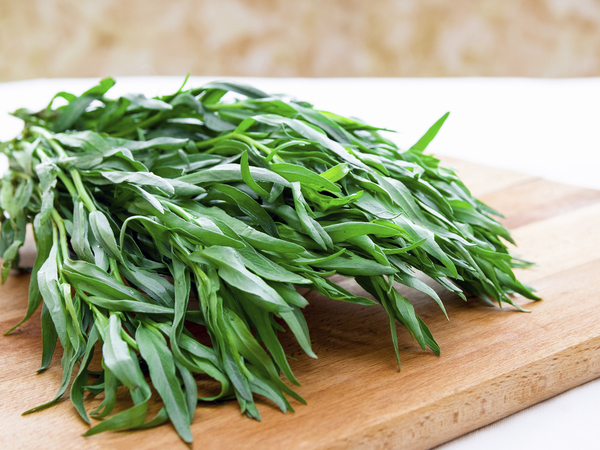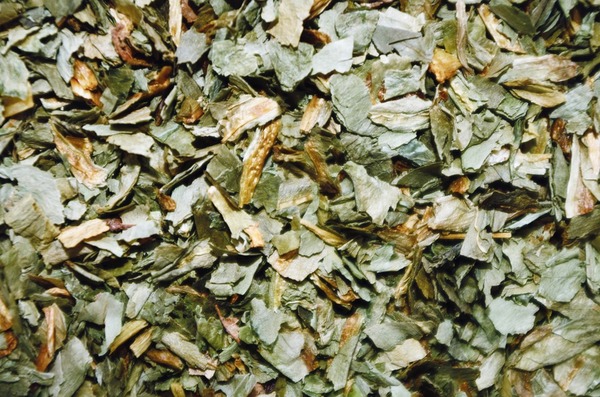Just In
- 15 hrs ago

- 15 hrs ago

- 18 hrs ago

- 19 hrs ago

Don't Miss
- Movies
 Pavi Caretaker Box Office Collection Day 1 Prediction: Dileep's Movie Expected To Open Strongly
Pavi Caretaker Box Office Collection Day 1 Prediction: Dileep's Movie Expected To Open Strongly - Sports
 Who Won Yesterday's IPL Match 41? SRH vs RCB, IPL 2024 on April 25: Royal Challengers Bangalore End Losing Streak
Who Won Yesterday's IPL Match 41? SRH vs RCB, IPL 2024 on April 25: Royal Challengers Bangalore End Losing Streak - Finance
 Bajaj Group Stock Declares Rs. 60/Share Dividend: Buy Ahead of Record Date On 28 June?
Bajaj Group Stock Declares Rs. 60/Share Dividend: Buy Ahead of Record Date On 28 June? - News
 MEA Dismisses US Human Rights Report On Manipur As 'Biased And Misinformed'
MEA Dismisses US Human Rights Report On Manipur As 'Biased And Misinformed' - Automobiles
 Royal Enfield Unveils Revolutionary Rentals & Tours Service: Check Out All Details Here
Royal Enfield Unveils Revolutionary Rentals & Tours Service: Check Out All Details Here - Technology
 Elon Musk’s X Is Launching a TV App Similar to YouTube for Watching Videos
Elon Musk’s X Is Launching a TV App Similar to YouTube for Watching Videos - Education
 AICTE introduces career portal for 3 million students, offering fully-sponsored trip to Silicon Valley
AICTE introduces career portal for 3 million students, offering fully-sponsored trip to Silicon Valley - Travel
 Escape to Kalimpong, Gangtok, and Darjeeling with IRCTC's Tour Package; Check Itinerary
Escape to Kalimpong, Gangtok, and Darjeeling with IRCTC's Tour Package; Check Itinerary
10 Surprising Health Benefits Of Tarragon
Scientifically termed as Artemisia dracunculus, tarragon is also known as estragon. The herb is widely used for its aroma and abundance of nutrients. Widely used in French cuisine, the nutritional properties possessed by the plant makes it a definite source of various health benefits. It is considered as one of the four essential herbs in French cooking and has a bitter-sweet flavour with notes of anise [1] .

[Source: Dr Weil]
Tarragon is not only used for preparing delicacies but is also used for various medicinal purposes. The most famous varieties of tarragon are French and Russian tarragons and can be easily grown. Tarragon leaves can be used in green salads and the dried leaves can be used as a flavouring base [2] . Containing a large number of beneficial nutrients and minerals such as protein, omega-3 and omega-6 fatty acids, niacin, riboflavin etc., this herb is a must add to your daily diet [3] .
Regular consumption can combat various diseases affecting your heart to your overall health. Read on to know the means through which the fascinating herb can help improve your overall health.
Nutritional Information Of Tarragon
100 grams of the herb contains 295 calories of energy.
The remaining nutrients in tarragon are as follows [4] :
- 50.22 g total carbohydrate
- 7.4 g dietary fibre
- 7.24 g total fat
- 22.77 g protein
- 62 mg sodium
- 3020 mg potassium
- 4200 mcg vitamin A
- 50 mg vitamin C
- 32.30 mg iron
- 1139 mg calcium

Health Benefits Of Tarragon
From providing pain relief to calming the nerves and increasing appetite, the aromatic herb is a natural diuretic that will relieve water retention in the body.
1. Improves heart health
The high levels of potassium in tarragon leaves can work wonders on improving the function of your heart and the overall heart health. The anti-inflammatory properties possessed by the leaves protect your heart vessels from external and internal damages. Along with these, the leaves are also beneficial in regulating heart contraction [5] .
2. Prevents cancer
Tarragon leaves are rich in antioxidants which help prevent the onset of cancer. That is, it aids in fighting against the fight free radicals that cause cancer. The antioxidant property of tarragon not only prevents cancer cell growth but also protects your body against serious illnesses [6] .
3. Protects intestinal mucosa
An intestinal barrier, the intestinal mucosa can get damaged in certain cases. Tarragon, rich in zinc, help repair the internal intestinal walls, thereby assisting the reconstruction [7] .

4. Manages diabetes
Tarragon is highly beneficial for individuals suffering from diabetes. Because, it helps maintain the patient's blood sugar by evenly distributing the calories consumed, throughout your body [8] . Rich in poly-phenolic compounds and dietary fibres, the leaves help distribute the calories to all organs in your body; thereby aiding in reducing the blood sugar levels in individuals suffering from diabetes [9] .
5. Prevents anaemia
The iron content in tarragon can be accorded to this benefit. The mineral helps produce red blood cells containing haemoglobin, which is central to limiting the onset of anaemia. Tarragon also contains high levels of vitamin C which aid the absorption of iron in the body [10] .
6. Promotes healthy blood flow
Tarragon contains compounds that are asserted to possess the ability to inhibit the activation of platelets. This, in turn, prevents aggregation to the walls of blood vessels, thereby preventing clot formation in the heart and brain vessels [11] . This protects the individual from the risks of a stroke or heart attack. The iron content in the herb is also beneficial in this case as it promotes cellular respiration and blood cell production. All of these collectively contribute towards promoting healthy blood flow throughout one's body [12] .

7. Improves digestion
Possessing a high amount of antioxidants, tarragon help reduce the symptoms of inflammation. In comparison to the other types of herbs, tarragon is increasingly beneficial in treating swelling and redness caused by inflammation. The omega-3 fatty acid also accords to this benefit [13] .
8. Boosts eye health
Rich in vitamin A, the herb can be consumed to improve your vision and sight. The vitamin helps improve your visual acuity and protects the eyes from diseases such as cataract and other degenerative eye diseases [14] .
9. Enhances female reproductive health
Consuming tarragon can help with suppressed menstruation and promote a healthy female reproductive tract. The eugenol present in the herb can help reduce menstrual pains, and the magnesium help relax stressed out muscles [15] .
10. Advances bone health
Rich in calcium and phosphorous, consuming tarragon can helps improve your bone strength and bone formation. It also help and promotes muscle growth and muscle mass due to the adsorption of creatinine in the body [16] .

Health Tarragon Recipes
1. Creamy mushroom & tarragon lentils
Ingredients [17]
- 120g cherry tomatoes
- A handful of fresh tarragon
- 120g mushrooms
- ½ lemon
- 1 garlic clove
- 240g lentils in water, drained
- 2 tbsp oil
- 80g brown rice
- 80ml coconut yoghurt
Directions
- Rinse the brown rice and place into a saucepan with 400ml boiling water and a pinch of sea salt.
- Simmer for 20-25 mins and drain.
- Drain and rinse the lentils.
- Thinly slice the mushrooms and finely chop the garlic and cherry tomatoes in half.
- Finely slice the tarragon leaves.
- Heat a medium-sized pan with 1 tbsp oil on medium heat and cook the garlic and mushrooms for 3 mins.
- Add the lentils for 5 mins and season with sea salt and black pepper.
- Stir in the coconut yoghurt, half of the tarragon and a squeeze of lemon juice and cook for another 2 mins.
- Mix well.
2. Tarragon and lemon roasted vegetables
Ingredients
- 500g butternut squash, peeled and de-seeded
- 2 small red onions, peeled
- 2 red peppers, halved and de-seeded
- 1 bulb of garlic, broken into cloves
- 2 tbsp olive oil
- zest and juice of 1 lemon
- salt and freshly ground black pepper
- 3 tbsp chopped fresh tarragon

[Source: Southern Lady Magazine]
Directions
- Preheat the oven to 200°C.
- Cut the vegetables into bite sized chunks and place it in a dish.
- Add the olive oil, zest and juice, salt and ground black pepper and toss well to mix.
- Roast for 20 minutes.
- Remove and mix, and roast for another 15 minutes.
- Scatter over the herbs and return to the oven for a final 2-3 minutes or until the herbs are slightly wilted.
Precautions
- Individuals with bleeding disorders should not consume the herb [18] .
- If you are allergic to ragweed, daisies, marigolds etc. do not consume tarragon.
- Anyone undergoing surgeries in a period of two weeks should stay away from tarragon.
- Pregnant and breastfeeding women should avoid the herb.
- [1] Céspedes, C. L., Avila, J. G., Martínez, A., Serrato, B., Calderón-Mugica, J. C., & Salgado-Garciglia, R. (2006). Antifungal and antibacterial activities of Mexican tarragon (Tagetes lucida).Journal of agricultural and food chemistry,54(10), 3521-3527.
- [2] Kfoury, M., Auezova, L., Ruellan, S., Greige-Gerges, H., & Fourmentin, S. (2015). Complexation of estragole as pure compound and as main component of basil and tarragon essential oils with cyclodextrins.Carbohydrate polymers,118, 156-164.
- [3] Hedaryan, A. H., Mehrpouri, M. M., Ayatolahi, M. A., bakhshian Farsiani, A., Hamidpou, P. R., & Hamidpour, P. M. The effect of Tarragon (Artemisia dracunculus) extract on platelet function.
- [4] Arabhosseini, A., Huisman, W., Van Boxtel, A., & Müller, J. (2009). Modeling of thin layer drying of tarragon (Artemisia dracunculus L.).Industrial crops and products,29(1), 53-59.
- [5] McKay, D. L., & Blumberg, J. B. (2006). A review of the bioactivity and potential health benefits of peppermint tea (Mentha piperita L.).Phytotherapy Research: An International Journal Devoted to Pharmacological and Toxicological Evaluation of Natural Product Derivatives,20(8), 619-633.
- [6] Bower, A., Marquez, S., & de Mejia, E. G. (2016). The health benefits of selected culinary herbs and spices found in the traditional Mediterranean diet.Critical reviews in food science and nutrition,56(16), 2728-2746.
- [7] Craig, W. J. (1999). Health-promoting properties of common herbs.The American journal of clinical nutrition,70(3), 491s-499s.
- [8] Obolskiy, D., Pischel, I., Feistel, B., Glotov, N., & Heinrich, M. (2011). Artemisia dracunculus L.(tarragon): a critical review of its traditional use, chemical composition, pharmacology, and safety.Journal of agricultural and food chemistry,59(21), 11367-11384.
- [9] Balambika, R., & Raja, K. (2010).U.S. Patent Application No. 12/588,296.
- [10] Thompson, M. D., & Thompson, H. J. (2010). Botanical diversity in vegetable and fruit intake: Potential health benefits. InBioactive Foods in Promoting Health(pp. 1-17). Academic Press.
- [11] Prasain, J. K., Carlson, S. H., & Wyss, J. M. (2010). Flavonoids and age-related disease: risk, benefits and critical windows.Maturitas,66(2), 163-171.
- [12] Vidrih, R., Filip, S., & Hribar, J. (2009). Content of higher fatty acids in green vegetables.Czech J Food Sci,27, 125-129.
- [13] Kurian, A. (2012). Health benefits of herbs and spices. InHandbook of herbs and spices(pp. 72-88). Woodhead Publishing.
- [14] Stibbe, A. (2004). Health and the social construction of masculinity in Men’s Health magazine.Men and Masculinities,7(1), 31-51.
- [15] Jessica Elizabeth, D. L. T., Gassara, F., Kouassi, A. P., Brar, S. K., & Belkacemi, K. (2017). Spice use in food: Properties and benefits.Critical reviews in food science and nutrition,57(6), 1078-1088.
- [16] Mumivand, H., Babalar, M., Tabrizi, L., Craker, L. E., Shokrpour, M., & Hadian, J. (2017). Antioxidant properties and principal phenolic phytochemicals of Iranian tarragon (Artemisia dracunculus L.) accessions.Horticulture, Environment, and Biotechnology,58(4), 414-422.
- [17] Veggie. (n.d.). Tarragon recipes [Blog post]. Retrieved from, https://www.vegetarianrecipesmag.com/vegetarian-recipes/tarragon-and-lemon-roasted-vegetables
- [18] Eidi, A., Oryan, S., Zaringhalam, J., & Rad, M. (2016). Antinociceptive and anti-inflammatory effects of the aerial parts of Artemisia dracunculus in mice.Pharmaceutical biology,54(3), 549-554.
-
 healthAmul’s New Protein Product For Gym-Goers And Vegetarians: Know More About ‘Super Milk’
healthAmul’s New Protein Product For Gym-Goers And Vegetarians: Know More About ‘Super Milk’ -
 wellnessHeadache After Drinking Red Wine? This May Be The Reason!
wellnessHeadache After Drinking Red Wine? This May Be The Reason! -
 healthRelieve Day-to-Day Stress Like Shilpa Shetty With A Tennis Ball!
healthRelieve Day-to-Day Stress Like Shilpa Shetty With A Tennis Ball! -
 healthGet Your Groove On: 5 Health Benefits Of Dancing To Afro Beats
healthGet Your Groove On: 5 Health Benefits Of Dancing To Afro Beats -
 wellnessMilind Soman Birthday: The 'Made In India' Actor's Lunch Is The Best Way To Add Veggies To Your Diet
wellnessMilind Soman Birthday: The 'Made In India' Actor's Lunch Is The Best Way To Add Veggies To Your Diet -
 healthWorld Sandwich Day: 4 Indian-born Sandwiches You Must Try!
healthWorld Sandwich Day: 4 Indian-born Sandwiches You Must Try! -
 healthDurga Puja Special: Why You Should Eat Hilsa Fish (Macher Raja) At least Once A Week
healthDurga Puja Special: Why You Should Eat Hilsa Fish (Macher Raja) At least Once A Week -
 health5 Natural Viagra Alternatives For Women
health5 Natural Viagra Alternatives For Women -
 healthChew These 4 Foods For A Defined Jawline
healthChew These 4 Foods For A Defined Jawline -
 wellnessInternational Gin And Tonic Day 2023: Interesting Benefits Of Gin That Will Definitely Surprise You!
wellnessInternational Gin And Tonic Day 2023: Interesting Benefits Of Gin That Will Definitely Surprise You! -
 healthBoost Your Health with Beetroot: Health Benefits And Ways To Add The Colourful Veggie In Your Diet
healthBoost Your Health with Beetroot: Health Benefits And Ways To Add The Colourful Veggie In Your Diet -
 insync3 Super Bizarre Uses For Eggs You Definitely Didn’t Know!
insync3 Super Bizarre Uses For Eggs You Definitely Didn’t Know!


 Click it and Unblock the Notifications
Click it and Unblock the Notifications



